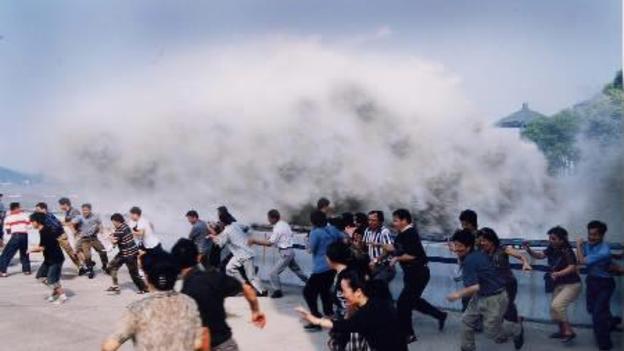Difference Between Tsunami and Hurricane

Both hurricanes and tsunamis are natural calamities that can cause massive destruction, and are different in their respective ways. A Hurricane is a powerful storm that develops in areas with low air pressure, especially over seas. A tsunami on the other hand, is a large set of waves, generated by the displacement of a substantial volume of sea water due to disturbances in the sea floor for instance.
Both tsunamis and hurricanes can be devastating when it comes to impacting human population and habitats, but overall, hurricanes have caused more damage and deaths (six lac lives in the last 50 years) because they are more frequent as compared to tsunamis. In a tsunami, tidal waves cause the most damage, hurricanes don’t necessarily involve waves.
Waves resulting from a hurricane form a storm surge and have an average height of around 25 feet (7 to 8 meters); however, they do not arrive at the seashore as quickly as tsunami waves. Moreover, storm surges have large amplitudes and small wavelengths, which they maintain throughout, but tsunami waves have small amplitudes and a very long wavelengths offshore, which reverse as they reach the shore.
Instructions
-
1
Hurricane
A hurricane is a storm system that is formed in the atmosphere, mainly due to extremely low air pressure, surrounded by a spiral arrangement of thunderstorms and accompanied by strong winds and heavy rain. In a hurricane, very strong winds, at least 34 metres per second (66 kn) or 74 miles per hour (119 km/h) spin around the centre of the storm, causing massive destruction not only to the centre but the areas surrounding it as well.
These swift winds sometimes produce high waves (storm surges) as well. These storm surges lead to extensive flooding in coastal areas (up to 25 miles (40km) from the coastline).
Hurricanes are no doubt extremely destructive and have devastating effects on human population, but they help relieve extended drought conditions. This is the reason they are believed to be a crucial part of the global atmospheric circulation mechanism. -
2
Tsunami
A tsunami is a large set of huge tidal waves triggered by the displacement of a large volume of a body of water, usually caused by the vertical movement of rocks under water. The major causes of this vertical movement of rocks include volcanic explosions, earthquakes and large landslides.
The wavelength of tsunami waves is far greater than that of normal waves. Normal waves have a wavelength of 30 to 40 meters, while tsunami waves go up to hundreds of kilometres. This natural calamity causes destruction by two mechanisms, the demolishing force of a large body of water travelling at a very high speed and the destructive power of the water draining off the coastal areas carrying a large amount of debris.







